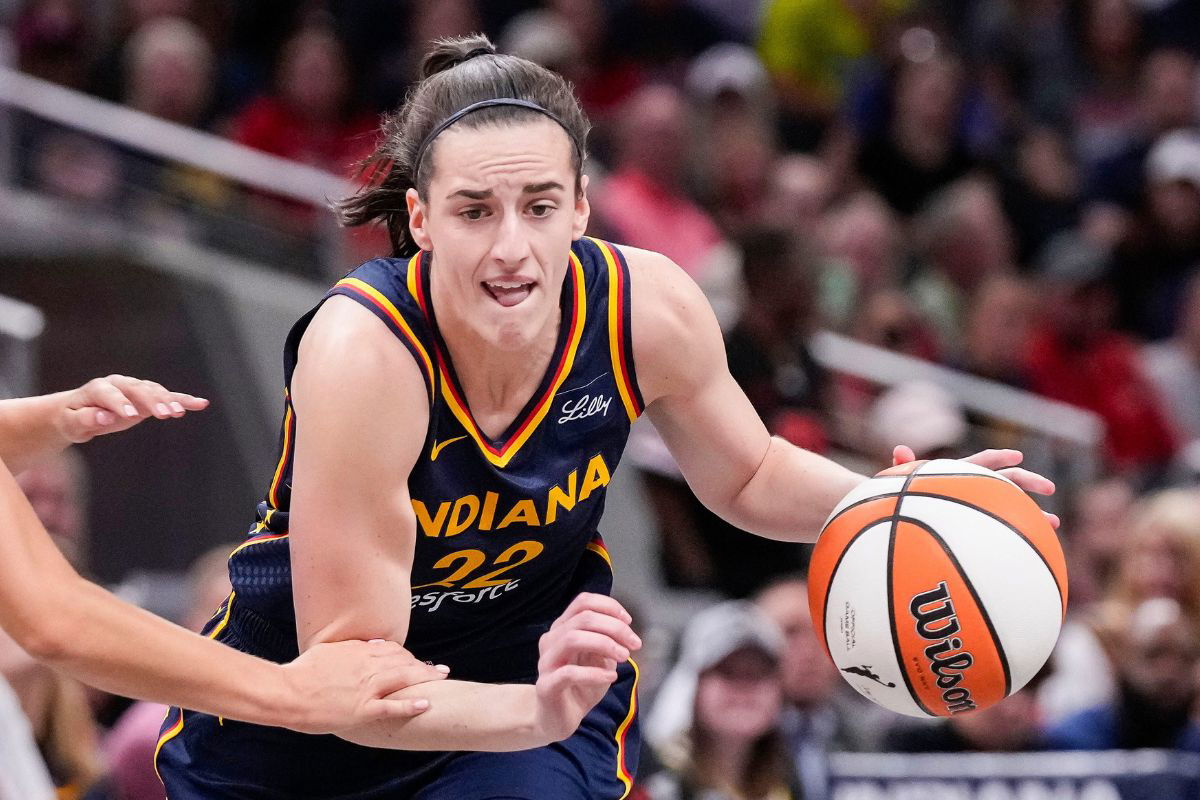
Imago
Indiana Fever guard Caitlin Clark (22) rushes up the court Sunday, Sept. 15, 2024, during the game at Gainbridge Fieldhouse in Indianapolis. The Indiana Fever defeated the Dallas Wings, 110-109.

Imago
Indiana Fever guard Caitlin Clark (22) rushes up the court Sunday, Sept. 15, 2024, during the game at Gainbridge Fieldhouse in Indianapolis. The Indiana Fever defeated the Dallas Wings, 110-109.
“Cathy added a lot of games. We had 9 games in 18 days. That’s not really responsible for a commissioner.” These sharp words from Phoenix Mercury’s Satou Sabally have echoed across the WNBA this season, highlighting the growing concerns over a tightly packed schedule. Players across the league have voiced similar frustrations, calling into question how sustainable the current pacing is for athlete health and performance.
Watch What’s Trending Now!
But while the grind intensifies on the court, the league’s off-court efforts to expand its reach have not gone unnoticed. A prime example of this was yesterday’s matchup between the Indiana Fever and the Golden State Valkyries, where a whooping 16,798 fans filled Gainbridge Fieldhouse. Just to catch a glimpse of their favorite star. But many of these spectators were not your average basketball crowd. Instead, they were campers and school-aged children witnessing their first taste of professional hoops. All thanks to a beloved WNBA tradition: Camp Day.
These early tip-offs offer young fans a chance to experience the WNBA games. The league intentionally hosts these midday games to cater to youth groups. They also aspire to make the experience accessible, inclusive, and memorable for the next generation. And as for Indiana’s superstar Caitlin Clark, it was yet another game played in front of an electrified, youthful audience that cheered not just for points, but for the joy of being part of something bigger.
ADVERTISEMENT
Meanwhile, national analyst Trysta Krick shared an Instagram post with a caption that read, “Like, clockwork people are complaining about morning starts in the summer for the WNBA. It’s one of the very best things the W does. They’re called Camp Days and they’ve been around at minimum 20 years. The 11:00 am start allows kids to bus in from camp and still be back for pick up at a reasonable time. I can’t imagine how many fans and how much good will they’ve built up over the years doing this.“
View this post on Instagram
Still, not everyone embraced the time of the crucial game. Some traditional fans voiced annoyance over the unusual 11 AM start, citing disruptions at work and in family routines that lead to missed broadcasts. Yet, Krick tried explaining the league’s 20-year-old tradition to the complaining audience and used social media as a means to urge people to embrace these early games.
ADVERTISEMENT
These Camp Day games drive the audience and the players into an enriching experience. While the young audience gets a euphoric, first-hand experience, these energetic crowds even ignite a spark in the players and bolster team performances. Meanwhile, the analyst even reminded critics to see the larger picture and understand that the games are one of the league’s secret engines for securing a young fan base.
The Camp Day is not a new phenomenon. It has existed as long as the league itself, and continues to inspire the next generation of fans and players. While the league walks on a tightrope between expansion and sustainability this season, it is events like the Camp Day that reflect a delicate balancing act. In the face of backlash over scheduling and workload, the WNBA continues to evolve: sometimes messily, sometimes brilliantly, but always with an eye set on the future.
ADVERTISEMENT
The WNBA is to expand into 3 new cities by 2030
“The demand for women’s basketball has never been higher, and we are thrilled to welcome Cleveland, Detroit, and Philadelphia to the WNBA family.” WNBA Commissioner Cathy Engelbert had announced the recent expansion plan ahead of the upcoming 2025 WNBA All-Star games.
“This historic expansion is a powerful reflection of our league’s extraordinary momentum, the depth of talent across the game, and the surging demand for investment in women’s professional basketball,” she had said. Since the league has been eyeing the expansion process for years, there were more than a dozen cities that submitted their bids, with Kansas City, St. Louis, Austin, Houston, Miami, Denver and Charlotte, North Carolina in the mix.
ADVERTISEMENT
However, Cathy & Co. decided to proceed with just three teams: Philly, Detroit, and Cleveland. The logic behind the decision was pretty simple. The league did not wish to dilute the talent pool. Also, the league analysed the existing market strength, infrastructural possibilities, hometown backing, and visibility options before settling for these options.
Top Stories
Ravens’ Lamar Jackson Demands Short-Term Contract Away From NFL on Thursday

‘RIP’: NASCAR World Crumbles in Tears as 39-YO Former JR Motorsports Driver Passes Away

NASCAR President Kicks Up ‘SRX’ Firestorm With Courtroom Claim Fans Refuse to Accept

Watch: Scottie Scheffler Left Stunned as the Ball Betrays Him

Yankees Offensive Free agency Ends Early as Cody Bellinger-Kyle Tucker Pursuit Ends Before Beginning: ESPN Insider

Who are Fernando Mendoza’s Parents? All about Elsa Mendoza and Fernando Mendoza

And as the league heads towards an unprecedented growth, can Cathy Engelbert and staff combat officiating blunders and other setbacks before these teams officially join? While 156 W players are the heart of this growth, but as Sabally pointed out, the league needs to draw regular game schedules keeping the player’s health in mind if they wish to keep shining.
ADVERTISEMENT
ADVERTISEMENT
ADVERTISEMENT

